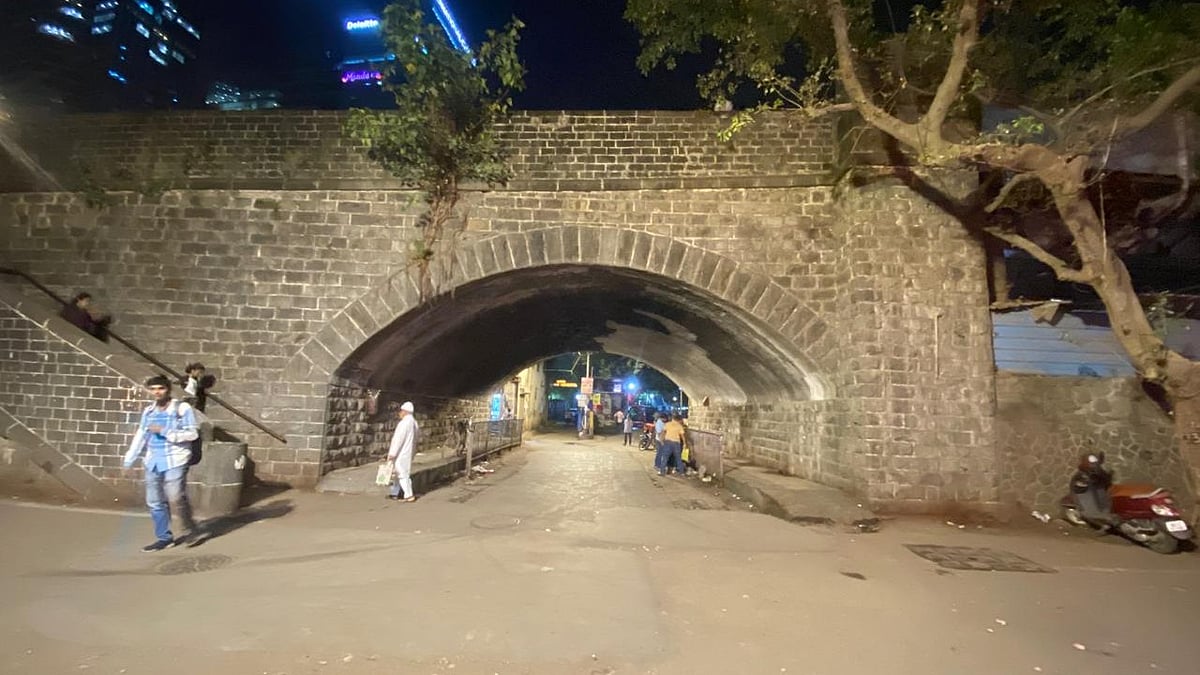Elphinstone Road’s 100-Year Journey: How Mumbai’s Iconic Bridge Shaped Commutes, Communities, And The City’s Growth
From industrial hub to modern Mumbai, the 1913 bridge linked communities, eased commutes, and now gives way to a new double-decker structure while preserving its historic charm

Pic: R VENKATESH
The Elphinstone Road Bridge has served as a connector for Mumbai, then Bombay, since 1913. It has eased the traffic and facilitated commuters by connecting Prabhadevi and Parel. Today, we recognise the erstwhile basalt stone-built bridge that stood the test of time.
Bridges have played an important role in the urban development of the city. R Venkatesh, an urban researcher, says, “The historic century-old bridges over Mumbai’s railway lines—like the Parel Elphinstone Road Bridge, Currey Road, Ollivant Bridge, S-bridge Byculla, Tilak Bridge, Sion Bridge are very important as they are east-west connectors crucial for the city to sustain. The city still craves more east-west connectors. Bridges were integral to the spatial development and infrastructure of “urbs prima in Indis” (Latin phrase, the old BMC motto indicating the primacy of the city in all of India), given its industrial development, port operations, and opportunities for wealth creation.”
Rajendra B. Aklekar, a journalist and author, mentioned in his book Halt Station India about the behind-the-scenes of building the connector back in British India. He says, “The Dramatic Tale of the Nation’s First Lines, the bridge over the railway at Parel carries both historical and engineering significance. Around 1905, the Great Indian Peninsula Railway (GIPR) asked the Bombay Municipality to fund a road over bridge to replace the level crossing. The municipality refused, as did the neighbouring Bombay, Baroda, and Central India Railway (BB&CI). Eventually, the GIPR shouldered the entire cost, with the civic body only building the approaches.”
He adds that the bridge was completed in 1913 and the structure still bears stone engravings with the name Parel Bridge, while the iron girders display oval plaques inscribed: “GIPR, Parel Bridge, 1913, Contractor Bomanji Rustomji.” Other metal seals on the girders record: “P & W Maclellan Limited, Clutha Works, GIPR, Glasgow, 1911,” a name familiar on GIPR structures such as Sandhurst Road station (1921) and the Matunga Carriage Workshop (1909).
The bridge was previously known as the Carroll Bridge. Aklekar says that though popularly remembered as Parel Bridge, railway documents also call it Carroll Bridge, after E. B. Carroll (1897), a Locomotive Superintendent of the BB&CI Railway, who was noted both for his coach designs and for pioneering carriage lighting systems.
The Elphinstone Road Bridge, named after John Elphinstone, the Governor of Bombay, also served the mills. Venkatesh says, “It served the dense industrial district of cotton mills. Long ago, the Governor of Bombay lived in Parel too. Parel station, built around 1877, is still the preferred cutover for commuters changing lines from Central to Western or vice versa.”
Venkatesh shares, “The bridge is a mix of Indian and imported industrial heritage. Mumbai was built by Indian contractors and civil work professionals working with the administration, keen on furthering the city’s commercial operations. The bridge was an intrinsic part of the daily life of thousands of residents and commuters from the age of the mill economy, when Parel was an industrial hub, to the present times of Lower Parel’s transformation into a service sector hub of skyscrapers.”
Kunal Tripathi of Mumbai Heritage talks about the historical remains of the structure of the Bridge. He says, “Today, the bridge’s century-old plaques and a rare iron bell are being preserved even as demolition began in 2025 to make way for a modern double-decker connector.”
As the 125-year-old bridge is under construction, it has become very difficult for the Mumbaikars. The pause on its functionality is adding to the chaos of the city. Venkatesh says, “The bridge was a catalyst for urban development, marked by chawls and other residential hubs, an area deeply rooted in Mumbai’s culture of hard work, community living, progress, and civic conveniences.”
RECENT STORIES
-
-
-
-
-